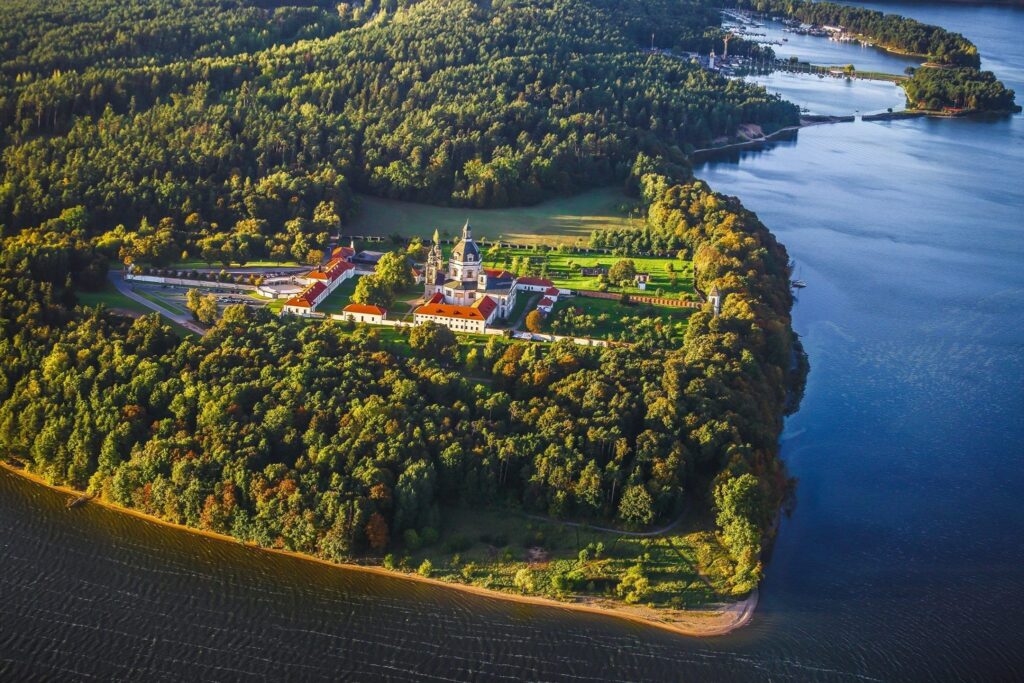
An analysis of recent research by the specialist accommodation finder Monasteries.com reveals solo women travellers outnumber solo male travellers by 67% to 37%. That’s despite the fact that 88% of females feel somewhat threatened travelling alone, whether in the UK or Europe. It seems solo women travellers are prepared to feel the fear but do it anyway.
Lily Smith, a leading travel expert from Monasteries.com, says: ‘Women are increasingly setting off on their own adventures, with 27% of British women saying they are considering a holiday alone. 81% of solo female travellers are over 45 years old. There are many factors that may have influenced this statistic – a newfound confidence as you get older, children leaving home, divorce, or just a desire to experience new things.
‘Naturally, safety is an important consideration for many solo travellers or, for that matter, for groups of maturer women travelling together. While 37% of women feel safer in a holiday property rental and 35% in a large hotel, according to recent research from the women’s travel resource JourneyWoman, that still leaves many women who don’t feel secure in traditional holiday accommodation.
‘For that reason, many women are surprised but delighted to discover they are able to stay in monasteries and convents both here in the UK and in many countries across Europe.
‘That might be a surprise to some people but, remember, monasteries have offered sanctuary to pilgrims and travellers for centuries, with a vow of “hospitality” a feature for many religious orders. That means monasteries, convents and abbeys are often more welcoming, encompassing and friendly than an anonymous hotel.
‘Often, the only major restriction might be a curfew, which is typically between 10pm and midnight. For many solo female travellers, however, the safety this offers may actually prove an attraction.
‘Furthermore, the abbeys, convents and monasteries at Monasteries.com, for example, start from as little as €40 a night and provide low-cost city centre stays in some of Europe’s most-visited cities. For example, the Casa Il Rosario in Rome is opposite the Roman Forum and close to the Piazza Venezia and Trevi Fountain, with ensuite double rooms available for less than €50 per person.
‘Far from having to take a vow of silence, guests often get the chance to meet like-minded travellers at many monasteries and abbeys. Food plays a very important role in monastic life, with guests often encouraged to come together for meals and friendly conversation. Most properties provide bed and breakfast as standard, with many catering for all meals, full board, if booked in advance.
‘It’s true that accommodation in monasteries can mean missing out on some of the more extravagant hotel luxuries, although all provide comfortable sleeping quarters, with most now offering ensuite facilities. While there may not be a TV in every room, this adds to the ambience of peace and seclusion, away from the wider world.
‘Perhaps contrary to expectation, there is no requirement for visitors to be of a religious background. Properties are available to any guest, female or male, who is respectful of the surroundings, the lifestyle and the monks or nuns. Booking a stay in an abbey or monastery is surprisingly easy. The unique accommodation site Monasteries.com focuses on providing a booking platform for European religious orders with stays across mainland Europe, Great Britain and Ireland. There is particular emphasis on Italy, Spain and France, where convent accommodation is most widely available.
‘The good news is that abbeys and convents are likely to be centrally located, often close to historical churches or religious landmarks and in cities such as Rome with a clear religious connection. For the spiritually minded, courses and retreats are another attraction.
‘For an increasing number of women travellers, explaining the security and ease of monasteries, convents and abbeys is like preaching to the choir.


